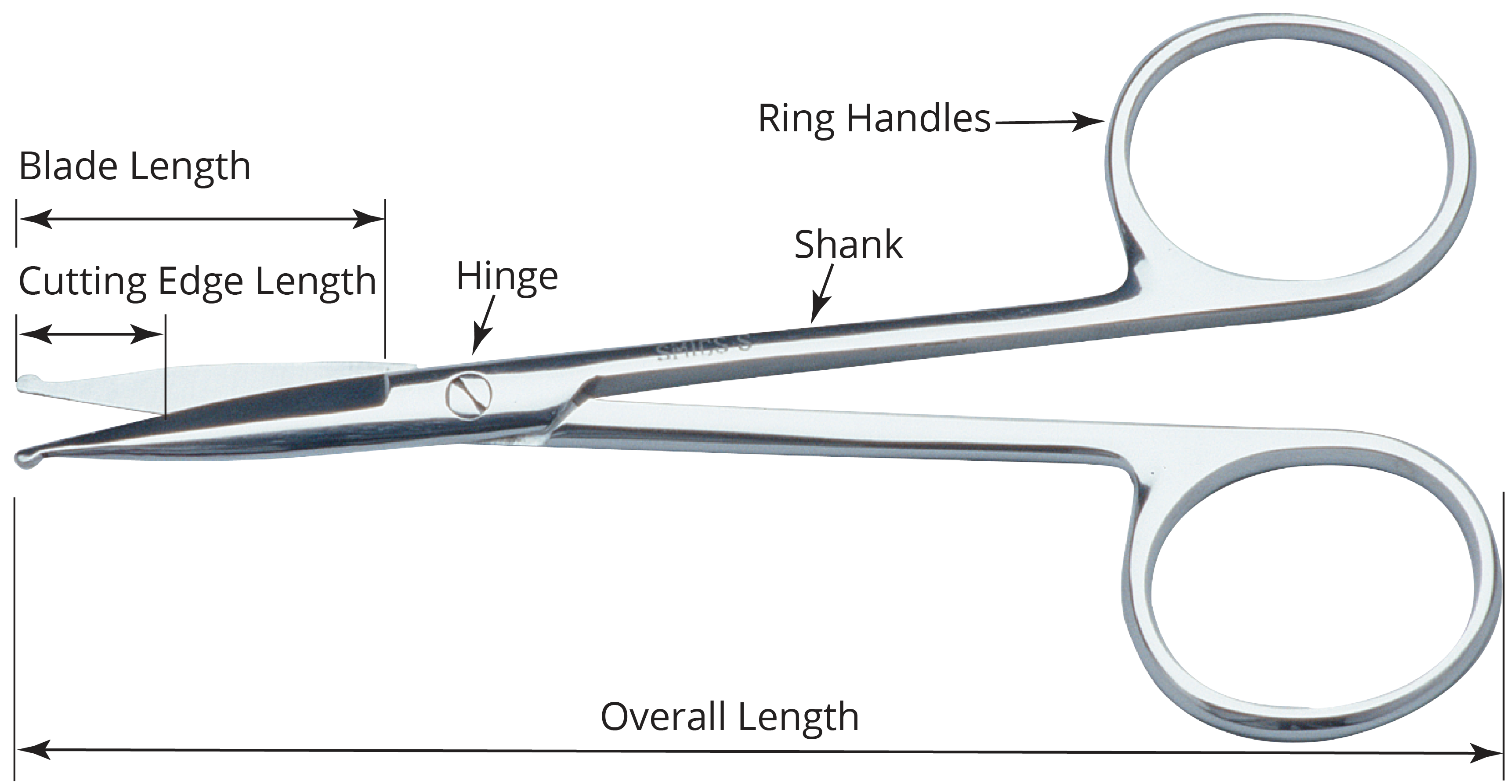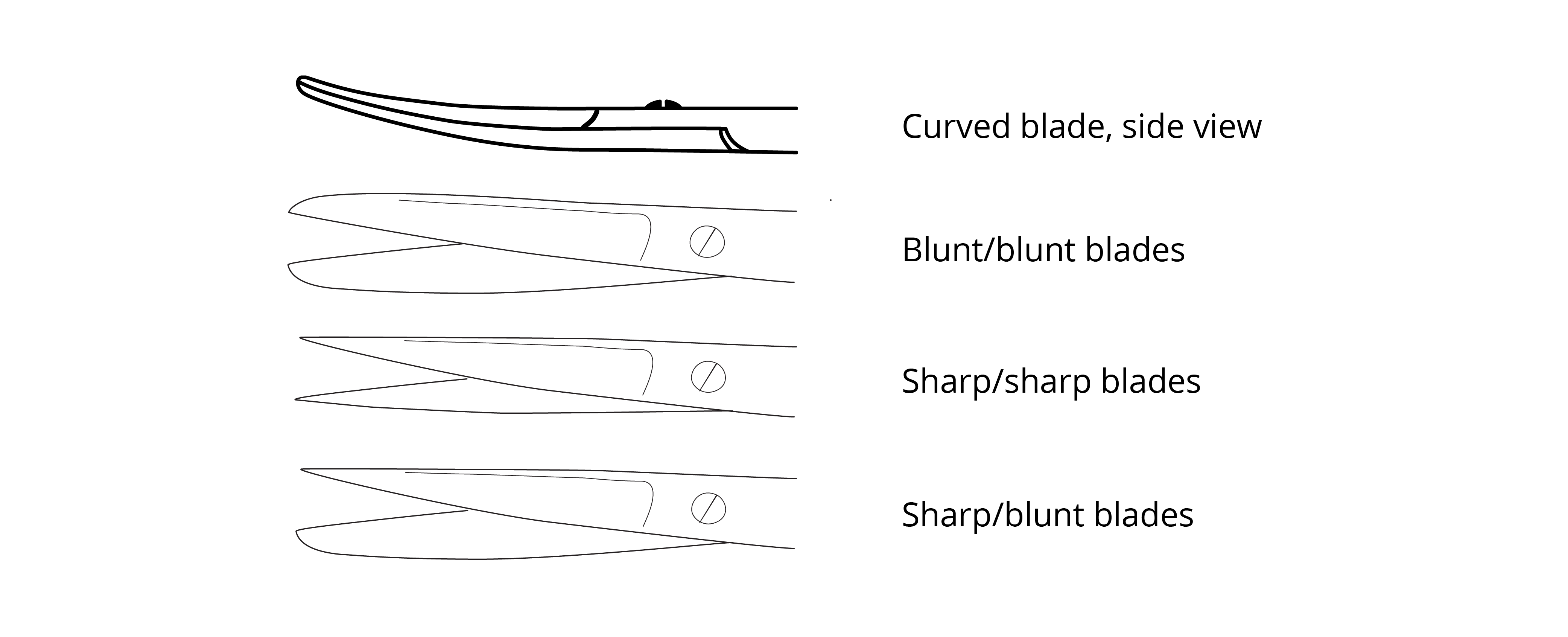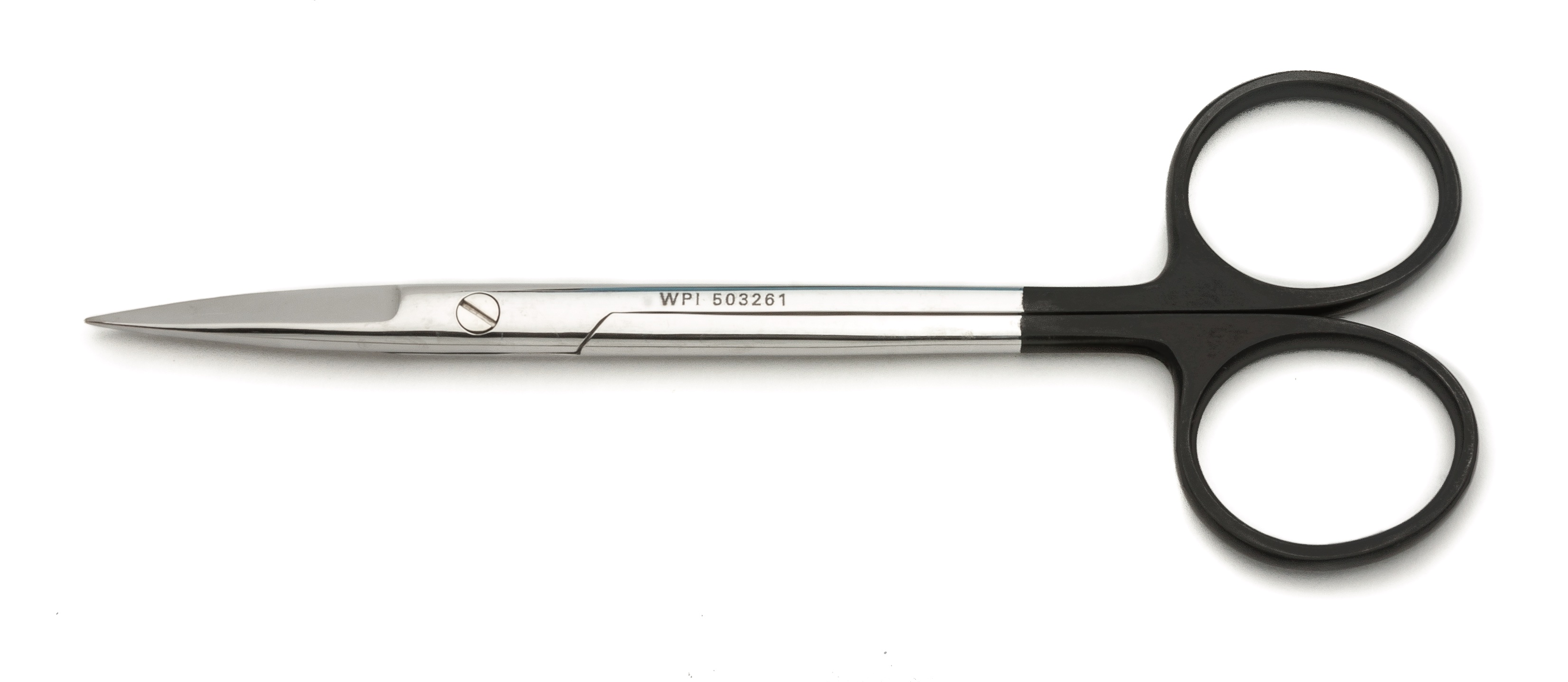
Cutting edge lengths are measured as the operational length of the cutting edge, the operational blade length. The cutting edge length on standard scissors is a little subjective, depending on the hand size of the operator. Open the scissors to a normal, natural position, and measure the distance from the tip to where the two blades cross. This is the maximum the jaws will open without unnatural manipulation.
The blade length is a little longer and is measured from the hinge to the tip of the blade. The blade length corresponds with the depth of the incision you wish to make. The smaller sized blades are used at the surface for small incisions, and the longer blades go deeper into cavities.
The hinge is the point where the two blades connect. It may have a tension screw, which can be adjusted, or it may be riveted together.
The shank is the body of the scissors between the ring handles and the hinge. For comfortable cutting, the longer your fingers, the longer the shank you should consider. If you have shorter fingers, you need scissors with shorter shanks. The longer shank to blade ratio allows for greater haptic feedback, which allows the operator to "feel" what's going on at the business end of the scissors.
The ring handles offer a firm grip for control. For ambidextrous use, consider choosing spring scissors instead.
Standard Scissor Tips
You have options for standard scissor tips. Both blades may be blunt, both may be sharp, or you can have one of each. The blades may be curved or straight. Curved blades provide a better visual of the working area and straight blades can be used for any type of incision.


Options
Our black handled surgical scissors designate our SuperCut scissors. These scissors have one razor sharp blade and one micro-serrate blade. The sharp edge gives a clean cut with minimal tissue damage, and the serrated edge actually holds the tissue to prevent it from slipping while you make an incision.


Scissors with tungsten carbide inserts have golden handles. Tungsten carbide instruments are more durable, hold an edge longer and last longer than stainless steel instruments.


Scissors designed with a heavier construction (like Metzenbaum, Mayo and SuperCut scissors) are useful for cutting fur, thicker tissure or vessels, and for blunt dissection. Scissors with fine, thin blades are used for delicate cutting.


If you have any questions, contact us.





Request
Catalogue
Chat
Print